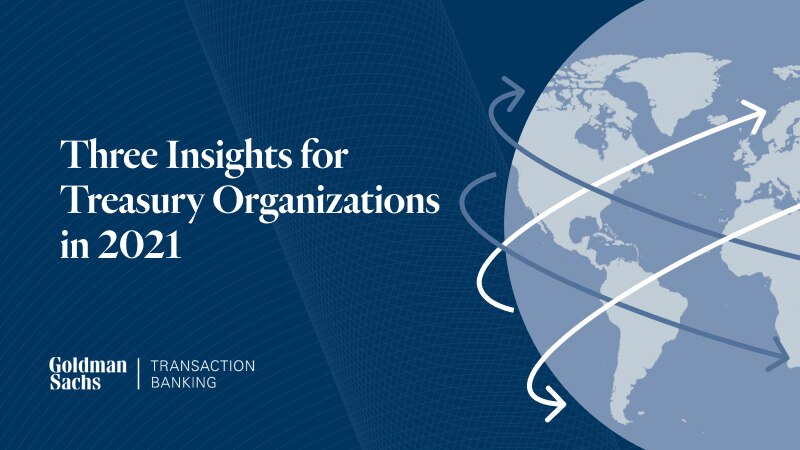Three Quick Insights for Treasury Organizations in 2021

By Mary Beth Livengood, Head of US Sales
Like most of us, I hope for a world less impacted by COVID next year and I’m eager to turn the page to 2021. Treasury organizations have proven to be incredibly resilient in 2020 and there are many lessons to be applied. Here are three key insights that ring true for treasury priorities next year taken from recent conversations that I have held with Chief Financial Officers and Treasurers – across large and small businesses alike.
1. Speed matters. While many thought business activity would slow down when COVID began in March, activity within global corporate treasury teams actually accelerated. The pandemic spawned a massive increase in the use of digital payments, digital receipts, and the need for real time information. What does that mean?
- The pace of change necessitated shorter implementation times. What used to take 18 to 24 months suddenly had to be accomplished in a fraction of that time.
- Implementation can be quite rapid, thanks to standardization (ISO 20022) and the rise of Application Programming Interfaces (APIs). At Goldman Sachs Transaction Banking we have fully automated account openings. We have on boarded clients within 1 business day and can open an account within minutes.
- A bank’s underlying legacy systems, if outdated and cumbersome, can impact its ability to deploy new services and features seamlessly to clients.
- Speed does matter and treasury teams should expect their banking partners to be agile in delivering products and services to them.
2. Increased role for Treasury to drive customer loyalty. Treasury has for many years been instrumental in selecting payment types that best fit its clients’ and vendors’ needs. Increasingly treasury teams are being asked to help companies generate new business through the deployment of treasury products targeted at building customer loyalty.
- The drive to more digital receipt and payment options has clearly accelerated in the past year and will remain a big trend for years to come.
- Businesses, increasingly, are turning to treasury departments to find new ways to enhance customer loyalty. A great example is Stripe’s announcement this month that it is working with Goldman Sachs Transaction Banking to embed financial services to its product offering (enabling their customers to easily send, receive and store funds) via electronic wallets. The use of these e-wallets also enhances the reconciliation processes within treasury organizations.
- The deployment of payment options, wallets and payment plan options as a means of acquiring more clients will increase in the new year.
3. The world is shrinking. Never has the world felt so small thanks to the stay-at-home reality and curtailed travel. However, cross-border payment activity continues to be massive. McKinsey estimates that worldwide payment revenue in 2020 will hit $1.9 trillion, an increase of 26% from 2014 and more than 75% from a decade ago.1 There are broad implications:
- The growth of global payments warrants a review of a treasury team’s end-to-end payment and reconciliation flows.
- Increasingly, treasury teams are deploying holistic payment solutions where the bank’s live rates are embedded directly into treasury work stations providing for the sourcing of rates, execution and reconciliation all within internal work stations. At Goldman Sachs Transaction Banking, our partnerships with GTreasury and SAP Ariba are just two examples of how we are delivering end-to-end global payment solutions to our clients.
Change continues at a rapid pace for treasury teams. Goldman Sachs Transaction Banking looks forward to working with clients in the New Year.


